by Mary Ann Moore | Jun 1, 2021 | A Poet's Nanaimo
I begin my day by journaling about my dreams and whatever those reflections lead to. Poems can begin that way too. It’s a beautiful threshold space, in between dreaming and waking.
When I offer a writing circle via Zoom on Thursday, June 3rd we’ll begin with a poem by Lorna Crozier: “A Good Day to Start a Journal.” From there we’ll write a journal entry about our day and move onto reading poems to inspire our own practice of “The Poetry of Presence.”
The writing circle is from 10 a.m. to 12 noon Pacific time on Zoom. I’m used to offering writing circles in the summer and this way, via Zoom, you can join wherever you may be. The fee is $45 payable by e-transfer or cheque. You can get in touch with me at creativity@maryannmoore.ca for further information and to register. Or have a look under “Poetry Circles.”
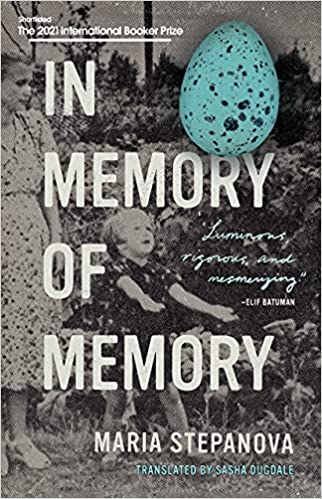 Recently, I began reading a book called In Memory of Memory by Maria Stepanova translated from the Russian by Sasha Dugdale (Book*hug Press, 2021) in which Stepanova writes of her late Aunt Galya who kept “countless used notebooks and diaries. She’d kept a diary for years; not a day passed without her scribbling a note, as much a part of her routine as getting out of bed or washing.”
Recently, I began reading a book called In Memory of Memory by Maria Stepanova translated from the Russian by Sasha Dugdale (Book*hug Press, 2021) in which Stepanova writes of her late Aunt Galya who kept “countless used notebooks and diaries. She’d kept a diary for years; not a day passed without her scribbling a note, as much a part of her routine as getting out of bed or washing.”
A diary can be kept as a “working tool” as Stepanova notes in relation to writer Susan Sontag. “Notebooks are an essential daily activity for a certain type of person, loose-woven mesh on which they hang their clinging faith in reality and its continuing nature. . . a notebook is a series of proofs that life has continuity and history, and (this is most important) that any point in your own past is still within your reach.”
Stepanova’s Aunt Galya made note of “daily occurrences, recorded with astonishing exactness, and with astonishing opacity. The diaries documented the time she got up and when she went to sleep, the television programs she’d watched, the number of phone conversations she’d had, who they’d been with, what she’d eaten, whatever else she’d done.”
These diaries weren’t reflections of an inner life and yet they seem to indicate a type of companionship or witness: this is what I did, this is what I will do, all proof I’m still here. It feels to me like a presence practice, the chronicling of the ordinary things in one’s day. Until her dying day, Aunt Galya wanted the diaries and notebooks close by even if simply, to touch them.
From October 11, 2005 [excerpted from “Someone Else’s Diary” in In Memory of Memory]
I rang the clinic. Ira from Social Services, and Yura in the evening. Watched television and tidied all the washing on the chair. Went to bed at 11:30 p.m.
Hot day. I wore the skirt Tonya got me. “Dreary sort of life, of no use to anyone,” as you might say. Tea in the afternoon, coffee in the evening. No appetite whatsoever.
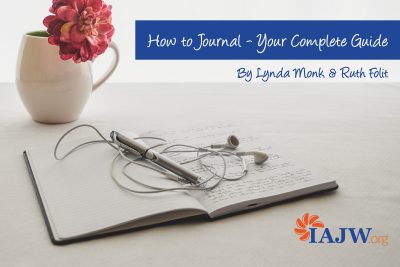 I’m a member of the Journal Council of the International Association for Journal Writing (IAJW) and have a couple of resources available for sale on the IAJW website. There are also many complimentary resources on the site, such as this blog article: How to Journal: Your Complete Guide to the Benefits of Personal Writing, which can be found here: https://iajw.org/how-to-journal-complete-guide/
I’m a member of the Journal Council of the International Association for Journal Writing (IAJW) and have a couple of resources available for sale on the IAJW website. There are also many complimentary resources on the site, such as this blog article: How to Journal: Your Complete Guide to the Benefits of Personal Writing, which can be found here: https://iajw.org/how-to-journal-complete-guide/
I suggest you have a look at all the IAJW has to offer. You can become a member or sign up for the newsletter which offers all sorts of inspiration for your journaling practice. I feel honoured to be one of the Journal Council members as my fellow writers on the council, have inspired me for many years.
In 1980 when I lived in Bowmanville, Ontario I wrote a column on Durham Region history for the Toronto Star. I put some of those articles into an engagement calendar I self-published called Durham Diary 1980. I still have my mother’s copy in which she recorded events and observations
March 8, 1980
M.A. and children came. It was great to see them. Rusty working as usual. Started to snow about 1:30 and they left at 3. Terrible drive home. Took 3 hours. We went to the Greens. Not very good & rather dull.
March 9, 1980
Guess what I did today?? Did the laundry – what else. This is called living? Hans will be home this week coming so no Margot.
Rusty was my husband at the time. Margot was my mother’s friend who was a great help to her (“really is my salvation”) as Mum was adjusting to an artificial leg which was extremely painful. She was also suffering from chest pains and had heart surgery the week of March 17, 1980. She has filled in “TGH” on many of the days . She crossed off several weeks in the calendar when she was at West Park Convalescent Hospital in Toronto.
As for poetry that begins in a journal, there is a difference between the two i.e. the journal entry and the crafted poem. Each word matters in the poem.
Jane Hirshfield says the difference between a journal entry and a poem is “the difference between a poet’s seeing and poetry’s seeing, and hearing, speech. One may help make the other possible, but they are not the same, in kind or intention – and the distinction exists because poetry itself, when allowed to, becomes with us a playable organ of perception, sounding out its own form of knowledge and forms of discovery. Poems do not simply express. They make, they find, they sound (in both meanings of that word) things undiscoverable by other means. “ (Ten Windows: How Great Poems Transform the World, Knopf, 2015)
I can see that journal excerpts whether my own or someone else’s such as my mothers’s, can make their way into a poem with some introspection and perhaps new discoveries on the part of the poet and from the poem itself.
The only way to tell you is to write
this down, our lives a journal
with notes about the weather, perhaps
a grocery list and appointments never kept
because the sparrows sing for seeds
in our apple tree, and the spider
at the centre of her web demands
your poet’s eye to hold her still.
from “A Good Day to Start a Journal” by Lorna Crozier
in The Blue Hours of the Day: Selected Poems (McClelland & Stewart, 2007)
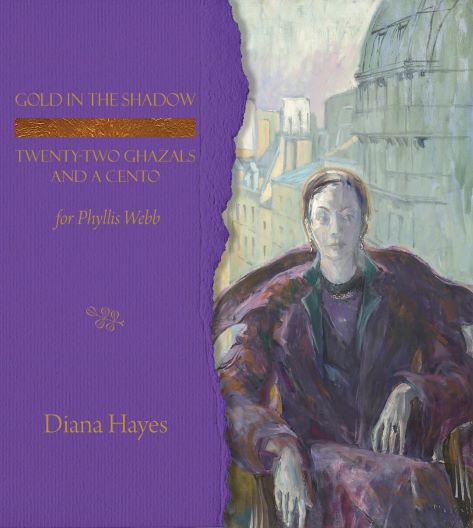
by Mary Ann Moore | Mar 21, 2021 | A Poet's Nanaimo
Diana Hayes new book of poetry, GOLD IN THE SHADOW: TWENTY-TWO GHAZALS AND A CENTO for Phyllis Webb (Rainbow Publishing, 2021), is exquisite in every detail: the design by Pat Walker Design and the papers used; the purple and gold of the cover; the size of the book; and the finely-rendered poetry written as a tribute to a beloved poet. Phyllis Webb will be 94 on April 8, 2021.
Diana Hayes and Phyllis Webb first met in 1980 and Phyllis “has been a mentor, friend, and a listening ear” to Diana. They both live on Salt Spring Island, British Columbia. Lorraine Gane, Diana’s editor, also lives on Salt Spring. Diana appreciates “walkabouts” she took with Lorraine as well as “the many insights and the courage to dive deeper into the work.”
The image that distinguishes the book’s cover is from an oil on canvas by Joe Plaskett entitled “Double Portrait of Phyllis Webb.” The frontispiece features both aspects of the double portrait, one of them a profile of Phyllis. Joe Plaskett’s studio in Paris was full of mirrors, Phyllis told Diana, and this may have led to the spontaneity of painting the two images. At first I thought the profile was of the aging poet looking to the youthful version of herself but as it turns out, Phyllis is the same age in both: 32 in 1959 when the painting was done.
As Diana describes them, the poems she has written are a personal expedition into Phyllis’s visual art and poetry. Diana began working on a “catalogue project” in 2017 to photograph Phyllis’s paintings and many of them opened the doors into the ghazals.
Diana’s introduction to the book of poetry, entitled “Night Journeys,” describes becoming intrigued by Phyllis’s visual art while also being a reader and collector of Phyllis’s poetry books. “The paintings,” Diana writes, “provided the maps for my journey into the ghazals. Lines from Phyllis’s poems echoed beyond horizons.”
What glorious night journeys Diana had in her writing studio built by her husband Peter Southam. “The ghazal was the official language of my nights,” Diana writes. Into the realm of poetry in the midst of the West Coast rainforest, Diana travelled to Paris, Egypt, Norway. There was opera at The Met, gods and goddesses, a monk and his lover, and many exotic flowers. A simply gorgeous introduction to the twenty-two ghazals she wrote.
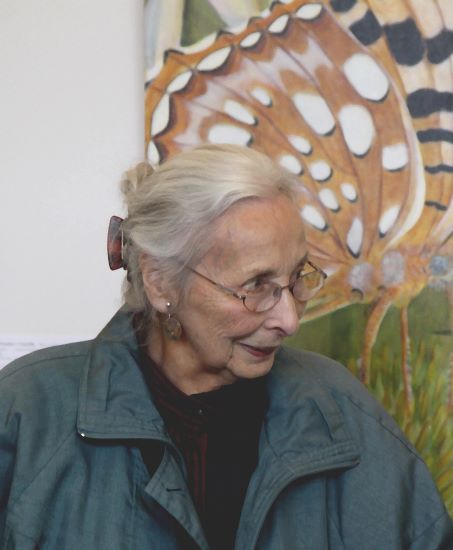 Diana has inhabited a form “that Phyllis Webb made her own – the ghazal in its Canadian variant pioneered by John Thompson – “ Erin Moure says in her endorsement of the book. While echoing the poems of Phyllis Webb, Diana’s ghazals “are perfectly themselves” says Eve Joseph in her endorsement. And indeed they are.
Diana has inhabited a form “that Phyllis Webb made her own – the ghazal in its Canadian variant pioneered by John Thompson – “ Erin Moure says in her endorsement of the book. While echoing the poems of Phyllis Webb, Diana’s ghazals “are perfectly themselves” says Eve Joseph in her endorsement. And indeed they are.
Black facing pages describe elements of the ghazals such as “the black roses of Halfeti” which are naturally occurring black roses which only grow in a small village in Turkey called Halfeti. They only appear black in the summer months.
The photo of Phyllis Webb is by Diana Hayes, Salt Spring Library, October 18, 2014.
Sometimes the explanations refer to a line from one of Phyllis’ poems or the title of one of her paintings. One of them,” Bronze Icon,” was a gift to Diana and her husband Peter on their wedding day, December 31, 2015. (There is an image of the painting in the book.)
The ghazal originated in Persia around the seventh century. One of its famous practitioners was Hafiz whose poetry many may know through the renderings, of Daniel Ladinsky.
“Originally, ghazals consisted of at least five but usually no more than twelve couplets (shers)” Kate Braid and Sandy Shreve explain in In Fine Form, 2nd Edition (Caitlin Press, 2016). Like traditional haiku, ghazals do not have titles. The couplets are so independent of each other, their order can be changed “without damaging the poem.”
One meaning of the word “ghazal” is “the talk of boys and girls” which can mean “sweet talk or verbal lovemaking” Edward Hirsch says in A Poet’s Glossary (Houghton, Mifflin, 2014). “The ghazal tends to blur the distinction between erotic and divine love,” Hirsch says.
The Urdu master of the ghazal, Ghalib (1797 – 1869), wrote:” There is a wilderness within a wilderness. I saw the desert and remembered home.”
Diana Hayes echoes that sentiment as she writes of her night journeys during “twenty-two nights, twenty-two ghazals” disembarking when she was home again as “the mad gardener of the Salish Sea.”
There is a sense of loss in Diana’s ghazals which is an aspect of one of the meanings of “ghazal”: “The cry of the gazelle when it is cornered in hunt and knows it must die.” (Hirsch)
As Ahmed Ali puts it, this explains “the atmosphere of sadness and grief that pervades the ghazal” as well as its “dedication to love and the beloved.” (as quoted by Hirsh)
In Diana’s Ghazal XIV, “Ennui has stolen the day, run off the with colours of dawn,” and in Ghazal XXII, “Grief is a two-legged crow hop, laughing . . “. And in the same poem, “acedia” is noted to refer to “a state of listlessness or torpor” that has been referred to “as the lost name for the emotion we are all feeling during the Covid-19 pandemic.” As the poet embarked on a journey, readers do as well with the ancient form depicting the travels and explorations of a life, and the very real sense of the present day.
Diana’s final couplet of Ghazal XXII reads:
The porter drops my valise on the studio steps.
Icons or encumbrance. To what world have I returned?
“A Cento for Phyllis” is made up of twenty-two lines of Phyllis Webb’s poetry from Water and Light: Ghazals and Anti Ghazals (Coach House Press, 1984) except for a couple of lines which are from “Mad Gardener To The Sea” in The Sea is Also A Garden (The Ryerson Press, 1962).
“Cento” is from the Latin word for “patchwork” and the form is a wonderful way to pay tribute to the poetry of a beloved poet. The combinations and juxtapositions of lines can be intriguing and delightful such as:
The purple orchid he brought me.
Coloured enough, though featherless.
The book is a wondrous accomplishment by one multi-talented and multi-disciplinary artist in homage to another. The limited edition book is multi-faceted and multi-layered, a rich journey of discovery with modern insights written in a traditional form.
Phyllis Webb was born in Victoria, B.C. in 1927. While at the University of British Columbia for her undergraduate degree in English and philosophy, she was encouraged in her vocation as a poet by Roy Daniells, Earle Birney and John Creighton. P.K. Page was “the one who made me feel I wanted to be a poet,” Phyllis said (as quoted by John F. Hulcoop in his introduction to Peacock Blue: The Collected Poems of Phyllis Webb (Talonbooks, 2014). F. R. Scott, a founding member of the CCF (Co-Operative Commonwealth Federation), was one of the men who influenced her and persuaded Phyllis to move to Montreal. She worked for the CBC interviewing poets and became executive producer of Ideas which she co-created with William Young.
Phyllis Webb’s final volume of poetry, Hanging Fire, came out in 1990. She was appointed an Officer of the Order of Canada in 1992. (Peacock Blue contains poems from Hanging Fire followed by uncollected and previously unpublished poems.)
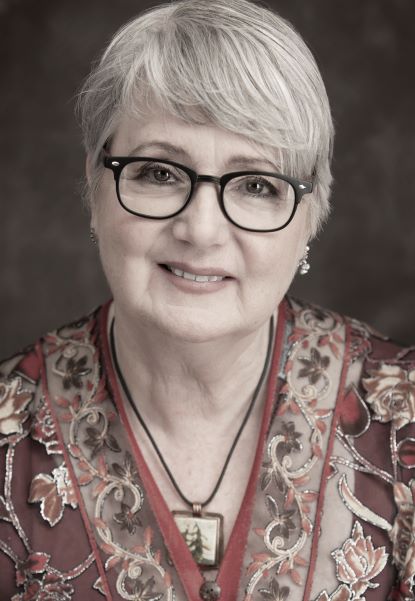 Diana Hayes has five published books including This is the Moon’s Work: New and Selected Poems (Mother Tongue Publishing) and Labyrinth of Green (Plumleaf Press).”Deeper Into the Forest,” a spoken word/music CD was produced at Allowed Sound Studio in 2020. Diana’s poetry has been included in several anthologies and her narrative photography has been featured in galleries in coastal B.C. Her practice of year-round swimming inspired the formation of the Salt Spring Seals in 2002. Diana has made Salt Spring Island home since 1981.
Diana Hayes has five published books including This is the Moon’s Work: New and Selected Poems (Mother Tongue Publishing) and Labyrinth of Green (Plumleaf Press).”Deeper Into the Forest,” a spoken word/music CD was produced at Allowed Sound Studio in 2020. Diana’s poetry has been included in several anthologies and her narrative photography has been featured in galleries in coastal B.C. Her practice of year-round swimming inspired the formation of the Salt Spring Seals in 2002. Diana has made Salt Spring Island home since 1981.
There will be a reading and celebration of GOLD IN THE SHADOW on Zoom on Saturday, March 27, 2021 at 7 p.m. To register for the event, email programs@saltspringlibrary.com.
To order a copy of GOLD IN THE SHADOW visit Diana Hayes’ website at www.dianahayes.ca.
The photo of Diana Hayes is by Ramona Lam.
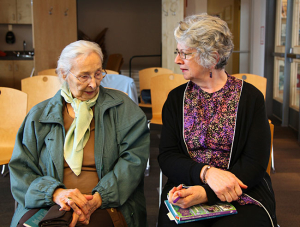
Phyllis Webb and Mary Ann Moore at the launch of Blue Halo by Lorraine Gane at the Salt Spring Library on Saturday, October 18, 2014. Photo: Diana Hayes. www.dianahayes.ca
by Mary Ann Moore | Mar 10, 2021 | A Poet's Nanaimo
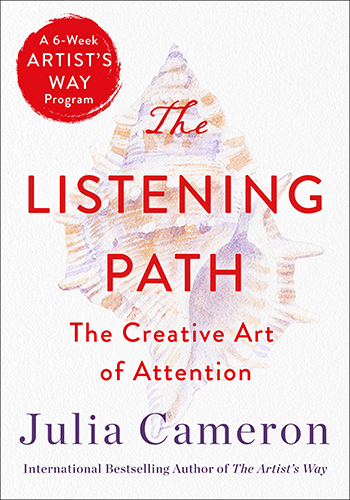 Julia Cameron has written a new book, The Listening Path: The Creative Art of Attention (St. Martin’s Essentials, 2021), which she describes as a 6-week Artist’s Way Program. Do you remember reading The Artist’s Way which helped many of us enter a “creative recovery” program for six weeks? It was first published in 1991. A 25th Anniversary edition came out in 2016.
Julia Cameron has written a new book, The Listening Path: The Creative Art of Attention (St. Martin’s Essentials, 2021), which she describes as a 6-week Artist’s Way Program. Do you remember reading The Artist’s Way which helped many of us enter a “creative recovery” program for six weeks? It was first published in 1991. A 25th Anniversary edition came out in 2016.
In her new book, Julia reminds readers of “the basic tools” from The Artist’s Way: Morning Pages, Artist Dates and Walks.
Morning Pages are a way to listen to ourselves each morning “thus clearing the way for further listening through the day.” To write “morning pages” is a daily practice of writing three pages in a stream-of-consciousness way, when first waking up. As Julia says: “We learn to trust that each word is perfect – good enough and even better than that.”
Anything and everything that crosses your mind is what goes into Morning Pages.
With Artist Dates “we listen to the youthful part of ourselves who craves adventure and is full of interesting ideas,” Julia says.
With Morning Pages, we focus “our attention on the problem at hand. With Artist Dates, we practice release, and our minds fill with new ideas. It takes the ‘letting go’ for the process to work.”
The Artist Date is a way to woo your artist self and is something you do on your own each week. While there are restrictions these days when it comes to art galleries, bookstores and the like, in our area we can visit bookstores while masked. Visiting the children’s section of a bookstore would be a fun Artist Date. There are amazing children’s books full of colour and stories to lift your spirits.
In downtown Nanaimo, there’s a small art gallery called Gallery Merrick. A visit to Joe and the art he has arranged by various artists would be a fun Artist Date. A fabric store, art store, craft supply store, or garden centre could be other possibilities. There may be gardens in your area that would be a good Artist Date where you could be on the look-out for signs of spring.
The Artist Date is a time to visit “something you love” and “come home to yourself,” Julia says.
Walks are a way to “listen both to our environment and to what might be called our higher power or higher self.”
Walking is the third tool as it’s a way to untangle “our often tangled lives” Julia says. Many spiritual traditions practice walking such as Buddhists with their walking meditation. It’s the form of meditation I prefer over sitting.
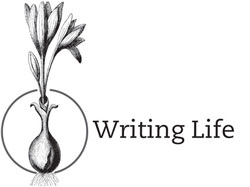 Julia says writing is indeed “a form of active listening.” For that reason, I’m using the theme of “The Listening Path” for the next Writing Life women’s writing circle that begins on March 31st. (Have a look under “Circles” for the Writing Life Circle (via Zoom) or for “Writing Life “from away” (via email).
Julia says writing is indeed “a form of active listening.” For that reason, I’m using the theme of “The Listening Path” for the next Writing Life women’s writing circle that begins on March 31st. (Have a look under “Circles” for the Writing Life Circle (via Zoom) or for “Writing Life “from away” (via email).
In her book, Julia describes her days in Sante Fe as she writes about Listening to Our Environment, Listening to Others, Listening to Our Higher Self.
In the chapter on Listening Beyond the Veil, Week 4, Julia quotes Johann Wolfgang Von Goethe: “The world is so empty if one thinks only of mountains, rivers & cities; but to know someone who thinks & feels with us, & who, though distant, is close to us in spirit, this makes the earth for us an inhabited garden.”
What a lovely phrase: “an inhabited garden.” Indeed, the memories of my parents, beloved aunts and uncles, friends and cats who have all passed on do inhabit my garden, my little part of the earth.
Listening to “the world beyond the veil,” Julia says, requires “spiritual openness.” She says: “All that is required is that we open the door. And so we write: ‘Can I hear from X?’”
She keeps in touch this way with two women friends who have passed on. Julia asked about something specific and it was if she was taking dictation as she “heard” the answer.
“But, Julia, what if your responses from the afterlife are just wishful thinking?” If so, her “wishful thinking” had led her in a positive direction, Julia says. “There can be no harm in the positive. The contact bolsters our self-worth.”
Week 5 is “Listening to Our Heroes” and one of Julia’s is Bill Wilson, co-founder of Alcoholics Anonymous. She has also connected to Carl Jung who answered her in a cooler way than Bill: “Ms. Cameron, you are on track. You have much to offer. You can express yourself well. Right now you are replenishing your stocks. There is much to be said for a deep, quiet life.” He actually recommended to Julia that she read Anais Nin!
Many years ago when I was teaching a creative writing class in Guelph, Ontario, I suggested that we write some advice from a beloved writer or artist. “Do you always do channeling in your classes,” a student later asked me. I hadn’t thought of it that way. Perhaps I was channeling advice directly from Frida Kahlo when I wrote a poem called “Frida’s Advice” but I thought of it as my vivid imagination and the knowledge I had of the late Mexican artist. Whatever the explanation, it is fun to do. I’ve included my poem, “Frida’s Advice,” below.
The final week or chapter 6 of The Listening Path is “Listening to Silence.” I so appreciate the silence in a poem – all that white space beyond each line where we take a pause. My poetry mentor, Patrick Lane, will have a new book of poetry released from Harbour Publishing in the Fall: The Quiet in Me.
“Most commonly, I’m told that stopping and listening to silence brings a sense of calm and possibility. For me, I know that is true,” Julia says. In each of her chapters she has “Try This” sections and in this chapter she suggests finding a quiet environment and noting your resistance to the silence and perhaps the feeling of missing out by turning off all devices. “Try making this a regular habit. Like any habit, it can become more natural with practice.”
When someone has died we offer a minute of silence, in remembrance. When someone is suffering a loss, we sit with them, no advice needed, in silence.
While we won’t necessarily follow Julia’s “Try This” sections in the writing circles, I have all sorts of ideas based on her weekly themes. I look forward to exploring them on my own and with others.
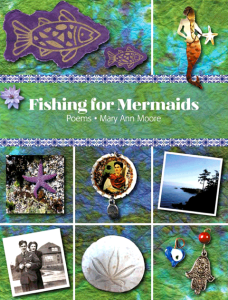
Fishing for Mermaids (Leaf Press, April 2014)
Frida’s Advice
Ask me why people are so fascinated with
my crazy life, mi vida loca,
and I answer:
it’s the combination of sinister blues, yellow love, gangrene
the difference they see as exotic,
my body,
of work
the flame in the pain.
I was in anguish and
originality,
the smell of the paint, the brush
in my hand –
transcended the pain.
I say:
Go to the centre of the fire.
See what’s there.
It may not be as hot as you think.
It may be blue cold.
Write in bed.
Surround yourself with what matters.
Explore red.
Come to Mexico.
Read Octavio Paz.
Free yourself from the still life.
As for my pain
it was always there
but an angel with cut-lace wings kept me breathing
kept me examining every fissure
on my face,
every symbol of my lineage
every radical expression
left in me.
I will write to you with my eyes, always.
“Frida’s Advice” won third prize in the Book Shelf’s Annual Poetry Contest and was published in the May/June 2005 issue of Off the Shelf, Guelph, Ontario. It is also included in Fishing for Mermaids (Leaf Press, 2014).
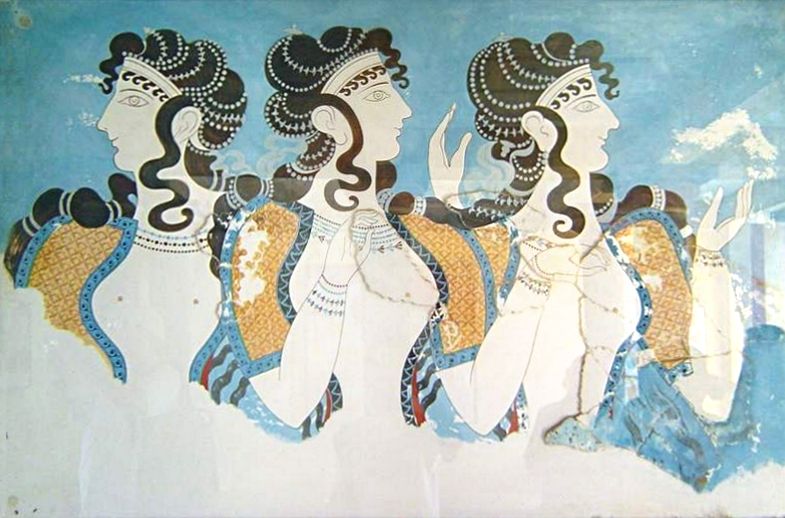
by Mary Ann Moore | Feb 20, 2021 | A Poet's Nanaimo
Today, as I begin to write this post, is the anniversary of my mother’s death. She died in palliative care at St. Michael’s Hospital in Toronto on February 18, 1995 at the age of 67. Mum was named Wilhelmina by her parents Mary Ann (Mayme) and Frank Dobberman in North Bay, Ontario and came to be known as Billie.
Mum married three times including my father Bob Moore when she was 18. Their marriage didn’t last very long, four years I think, before she left North Bay to carve out a life for herself.
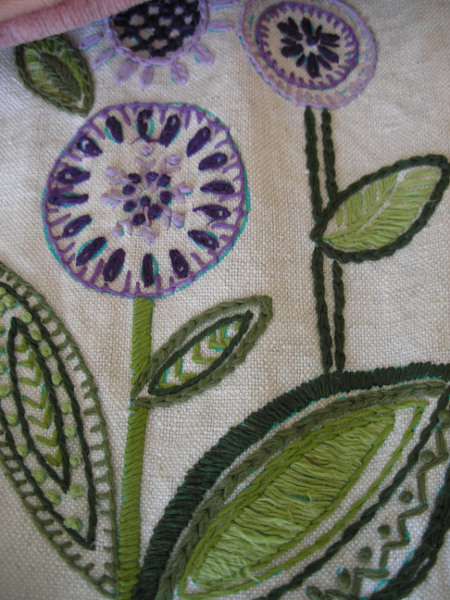
Detail from bell pull
Mum’s spirit continues to be with me. I still write poems about her, remember her many gifts to me and my children, and expressions she used that she would have learned from her mother make their way into conversations. Sarah and I still use her cutlery every day (wow that’s a long time) and her crewel work hangs on the wall. The image to the left is a detail of a bell pull done in crewel work.
In the fall of 1995, the year Mum died, I went on a goddess pilgrimage to the Greek island of Crete led by Carol Christ. I had read Carol’s books and was intrigued by the idea of travelling in a circle of women; taking part in rituals to celebrate women; and learning about the ancient earth-based cultures that worshipped a Mother Goddess. Carol, known as Karolina during our travels, wrote Odyssey with the Goddess: A Spiritual Quest in Crete which came out in 1995.
We found the goddess in trees and caves, mountains and ocean, in the stories of my fellow pilgrims (there were thirteen of us), and in the various physical forms the people of long ago created with their own hands. The pilgrimage turned out to be a healing journey that led to me offering women’s writing circles in my Toronto living room. I found hope in knowing there had been peaceful communities in the past where women were honoured and revered. I knew it would be possible to recreate that way of life again.
The first archaeological site we visited was Knossos, near the modern city of Heraklion where Carol Christ now lives. Parts of it have been reconstructed since 1375 bce. Archaeologist Sir Arthur Evans gave the name Minoan to the culture of the early people after the legendary King Minos. The “Ladies in Blue” fresco pictured above was found at Knossos and reproduced. This means that artists filled in the blanks, so to speak, using the small fragments that were available to them as guides. It’s a modern-day depiction as is the interpretation of Knossos as a palace with a king and queen.
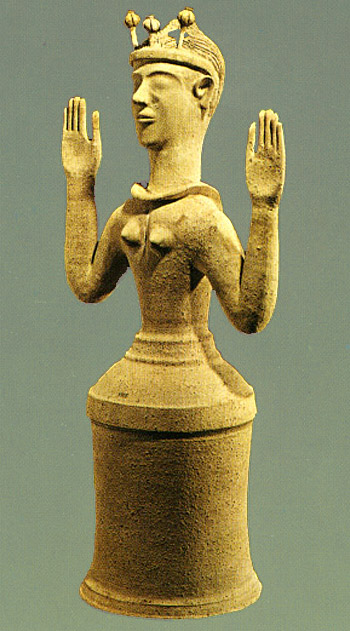 I have several of Carol Christ’s books including those written about pilgrimages to Crete, as well as glossy books about the various archaeological sites we visited including Malia and Gournia. I have photo albums and a few goddess reproductions including the Poppy Goddess. The original is made of terracotta and was found in a shrine excavated at Gazi on the western outskirts of Herakleion. I’m not ready to let any of these things go!
I have several of Carol Christ’s books including those written about pilgrimages to Crete, as well as glossy books about the various archaeological sites we visited including Malia and Gournia. I have photo albums and a few goddess reproductions including the Poppy Goddess. The original is made of terracotta and was found in a shrine excavated at Gazi on the western outskirts of Herakleion. I’m not ready to let any of these things go!
I’ve been looking at the various books to remind myself of the wonders of that journey to Crete. In recent newsletters, Carol Christ has said she has been undergoing chemotherapy treatments on the island of Crete. She will have surgery for her cancer soon. I wish her well.
In my effort to start paring down belongings this year I wanted to start with something simple which isn’t photographs and won’t be these books about Crete. I went to the bottom drawer of the living room cabinets. These are walnut cabinets that have been in Sarah’s family for many decades. Among the framed photos I had in the bottom drawer were pictures I took in Crete. They were on my wall in my Toronto apartment but there’s no room on any walls here in our Nanaimo home.
I’m appreciating the memory of the blue door that caught my eye as there are many buildings on the Greek islands that are white with blue shutters and/or doors. The vegetables in the market in Herakleion on the island of Crete looked so enticing. That’s not what you get though when you want to buy some. The beautiful ones are for display, the more misshapen ones are for purchase and they’re kept behind the display. The third framed photo shows stacks of unpainted pottery which caught my eye.
Greek salads are still a favourite and there are always Greek olives in the house. We buy Mountain Oregano, imported from Greece, from MB Mart in Nanaimo. Oregano was always sprinkled on the feta on the top of the Greek salads served family style on Crete.
Karolina will have surgery scheduled at the end of March. She’s grateful for the daffodils coming up in Heraklieon. A friend brought her some that are white with yellow centres.
I remember as Mum was dying in February 1995 (there was no treatment or surgery for her), there were yellow daffodils from B.C. outside a market in my Toronto neighbourhood.
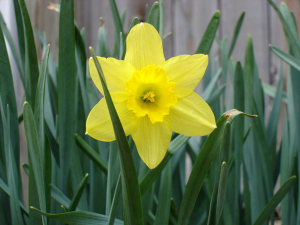 It’s an unusually warm day
It’s an unusually warm day
for February.
The market is trimmed
with daffodils from Vancouver.
The shopkeeper says:
have a nice day.
(from “February,” in Writing Home: A Whole Practice.)
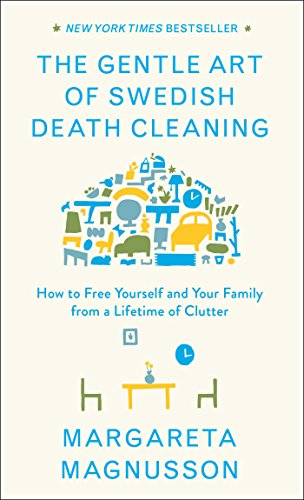
by Mary Ann Moore | Feb 13, 2021 | A Poet's Nanaimo
I’ve read Marie Kondo’s The Life-Changing Magic of Tidying Up (Ten Speed Press, 2014) and like her approach to keeping what sparks joy. I know we’re meant to do that with our book collections as well as our clothing and other belongings but I haven’t removed every book off every shelf to see if it gives me the “thrill of pleasure.”
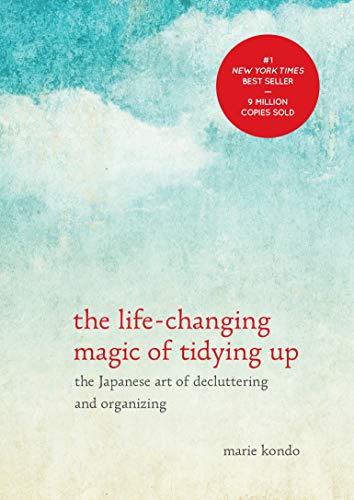 Marie has whittled her collection of books down to thirty. That’s not going to happen for me! I keep many books for reference purposes although I do try to keep books moving such as to friends, little neighbourhood libraries, and to Well Read Books in downtown Nanaimo. Their bookstore supports all their literacy programs. I’m looking forward to the Writing Life women’s writing circles meeting in person again as I like to have book draws to pass books along.
Marie has whittled her collection of books down to thirty. That’s not going to happen for me! I keep many books for reference purposes although I do try to keep books moving such as to friends, little neighbourhood libraries, and to Well Read Books in downtown Nanaimo. Their bookstore supports all their literacy programs. I’m looking forward to the Writing Life women’s writing circles meeting in person again as I like to have book draws to pass books along.
Tisha Morris is someone else whose work attracted me and I read her book Clutter Intervention: How Your Stuff is Keeping You Stuck (Llewellyn Publications, 2018). I like what Tisha says: “In all art forms, the beauty lies in the empty space.”
While an empty space breeds fear Tisha says, “the void is also where creation is born.” Keeping unused art supplies for instance can “end up stagnating the creative process.” Tisha is right when she says: “Inspiration happens in a flash, in peak moments of life, not in piles from yesteryear.”
“Which items are relevant to you now and to where you want to go? Tisha asks. When I was writing, in my last blog, about notebooks and journals that people keep, some said they like to look back to help them write their memoir or to see how well they survived, reminding themselves of their courage and resilience.
I’m considering what Tisha has to say: “When the past is so present that your vision for your future is cloudy, fuzzy, or overwhelming, that’s when you know too much is too much.”
Recently I saw a reference to The Gentle Art of Swedish Death Cleaning (Scribner, 2018) and borrowed the book from the library. The author, Margareta Magnusson, describes her age as somewhere between 80 and 100. As she says in her light-hearted book: “Death cleaning is not about dusting or mopping up; it is about a permanent form of organization that makes your everyday life run more smoothly.” Doesn’t that sound ideal? The cupboards by your front door is the place to start Margareta says. And anywhere else you may have stored things such as the attic or basement. Thankfully, I don’t have an attic or basement. Or a storage locker.
Personal papers are the things I really need to go through. Margareta says don’t start with those or photographs as you’ll “get stuck down memory lane and may never get around to cleaning anything else.” She says “start with the large items in your home, and finish with the small.”
We really do need a de-cluttering guide specifically for writers as we can amass great quantities of paper with every draft of everything we’ve ever written. And there are file folders of rejection letters. Those could make a good collage, just for the fun of it. especially if there are some famous names in there.
Following her husband’s death, Margareta Magnusson took a year for death cleaning. She worked at “a steady pace” on her own, keeping in mind certain objects that her children adored.
Margareta has a sweet way of suggesting to people such as your parents who are getting old, that they ought to think about what they want to do with their “many nice things” in particular, “later on.”
She has some questions that could be posed:
Do you enjoy having all this stuff?
Could life be easier and less tiring if we got rid of some of this stuff that you have collected over the years?
Is there anything we can do together in a slow way so that there won’t be too many things to handle later?
“If you decide to downsize your home, it is a good thing not to be in a hurry,” Margareta says. She advises against getting “stuck in memories. No, now planning for your future is much more important. Look forward to a much easier and calmer life – you will love it.” All of this is done by taking care of your present life in terms of your home and garden and yourself.
[The vase pictured is one that Sarah and I passed on to a friend with some flowers in it.]
Margareta’s late husband had a toolshed (snickarbod in Swedish) where he would organize and examine his tools every day. It gradually became “what I believe today is called a ‘man cave’ Margareta says. “ In Swedish we also now sometimes call it mansdagis – a male kindergarten, which makes me smile and which feels like an entirely appropriate word.” It makes me smile too!
Another great Swedish word is fulskap, “a cabinet for the ugly.” This is “a cupboard full of gifts you can’t stand to look at, and which are impossible to regift,” Margareta says. “Usually these are presents from distant aunts and uncles that you put on display when the giver comes to visit.”
“This is a bad idea. If aunts and uncles see their gifts on show, they will only give you more!”
“What it all comes down to is, if you don’t like something, get rid of it,” Margareta says. No one is visiting these days so it’s a good time to get rid of ugly things. We’re fortunate that we can take ornaments and the like to local thrift stores in our area these days. You can always take a picture of what you’re letting go of and write about it in a notebook. Something else to let go of at some point!
“Death cleaning is also something you can do for yourself, for your own pleasure,” Margareta says. “And if you start early, at say sixty-five, it won’t seem like such a huge task when you, like me, are between eighty and one hundred.”
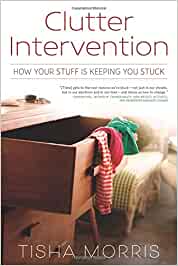 As I’m between 70 and 80, it’s definitely time to clear the way for what else wants to reveal itself, in the clear space, in terms of creative pursuits. And,to make it much easier for whoever has to deal with all the stuff. It’s easy to feel stuck these days as we can’t travel very far or gather in groups as we’d like to, so it’s probably a good time, being the Chinese Year of the Ox, to clear out and pare down. (2021 is a Metal year which represents a clean, pristine, even shiny environment.)
As I’m between 70 and 80, it’s definitely time to clear the way for what else wants to reveal itself, in the clear space, in terms of creative pursuits. And,to make it much easier for whoever has to deal with all the stuff. It’s easy to feel stuck these days as we can’t travel very far or gather in groups as we’d like to, so it’s probably a good time, being the Chinese Year of the Ox, to clear out and pare down. (2021 is a Metal year which represents a clean, pristine, even shiny environment.)
Tisha Morris says when it comes to “work supplies” which I take to include all those “ideas” files I have, let them go. (I can always write about them here!) “In seeing the bigger picture, you can let go of the old supplies and step more fully into the expanded version of your current self. Clutter is anything that keeps us anchored in the past, preventing us from moving forward.” We definitely don’t want that.
 Recently, I began reading a book called In Memory of Memory by Maria Stepanova translated from the Russian by Sasha Dugdale (Book*hug Press, 2021) in which Stepanova writes of her late Aunt Galya who kept “countless used notebooks and diaries. She’d kept a diary for years; not a day passed without her scribbling a note, as much a part of her routine as getting out of bed or washing.”
Recently, I began reading a book called In Memory of Memory by Maria Stepanova translated from the Russian by Sasha Dugdale (Book*hug Press, 2021) in which Stepanova writes of her late Aunt Galya who kept “countless used notebooks and diaries. She’d kept a diary for years; not a day passed without her scribbling a note, as much a part of her routine as getting out of bed or washing.” I’m a member of the Journal Council of the International Association for Journal Writing (IAJW) and have a couple of resources available for sale on the IAJW website. There are also many complimentary resources on the site, such as this blog article: How to Journal: Your Complete Guide to the Benefits of Personal Writing, which can be found here: https://iajw.org/how-to-journal-complete-guide/
I’m a member of the Journal Council of the International Association for Journal Writing (IAJW) and have a couple of resources available for sale on the IAJW website. There are also many complimentary resources on the site, such as this blog article: How to Journal: Your Complete Guide to the Benefits of Personal Writing, which can be found here: https://iajw.org/how-to-journal-complete-guide/

 Diana has inhabited a form “that Phyllis Webb made her own – the ghazal in its Canadian variant pioneered by John Thompson – “ Erin Moure says in her endorsement of the book. While echoing the poems of Phyllis Webb, Diana’s ghazals “are perfectly themselves” says Eve Joseph in her endorsement. And indeed they are.
Diana has inhabited a form “that Phyllis Webb made her own – the ghazal in its Canadian variant pioneered by John Thompson – “ Erin Moure says in her endorsement of the book. While echoing the poems of Phyllis Webb, Diana’s ghazals “are perfectly themselves” says Eve Joseph in her endorsement. And indeed they are. Diana Hayes has five published books including This is the Moon’s Work: New and Selected Poems (Mother Tongue Publishing) and Labyrinth of Green (Plumleaf Press).”Deeper Into the Forest,” a spoken word/music CD was produced at Allowed Sound Studio in 2020. Diana’s poetry has been included in several anthologies and her narrative photography has been featured in galleries in coastal B.C. Her practice of year-round swimming inspired the formation of the Salt Spring Seals in 2002. Diana has made Salt Spring Island home since 1981.
Diana Hayes has five published books including This is the Moon’s Work: New and Selected Poems (Mother Tongue Publishing) and Labyrinth of Green (Plumleaf Press).”Deeper Into the Forest,” a spoken word/music CD was produced at Allowed Sound Studio in 2020. Diana’s poetry has been included in several anthologies and her narrative photography has been featured in galleries in coastal B.C. Her practice of year-round swimming inspired the formation of the Salt Spring Seals in 2002. Diana has made Salt Spring Island home since 1981.
 Julia Cameron has written a new book, The Listening Path: The Creative Art of Attention (St. Martin’s Essentials, 2021), which she describes as a 6-week Artist’s Way Program. Do you remember reading The Artist’s Way which helped many of us enter a “creative recovery” program for six weeks? It was first published in 1991. A 25th Anniversary edition came out in 2016.
Julia Cameron has written a new book, The Listening Path: The Creative Art of Attention (St. Martin’s Essentials, 2021), which she describes as a 6-week Artist’s Way Program. Do you remember reading The Artist’s Way which helped many of us enter a “creative recovery” program for six weeks? It was first published in 1991. A 25th Anniversary edition came out in 2016. Julia says writing is indeed “a form of active listening.” For that reason, I’m using the theme of “The Listening Path” for the next Writing Life women’s writing circle that begins on March 31st. (Have a look under “Circles” for the Writing Life Circle (via Zoom) or for “Writing Life “from away” (via email).
Julia says writing is indeed “a form of active listening.” For that reason, I’m using the theme of “The Listening Path” for the next Writing Life women’s writing circle that begins on March 31st. (Have a look under “Circles” for the Writing Life Circle (via Zoom) or for “Writing Life “from away” (via email).


 I have several of Carol Christ’s books including those written about pilgrimages to Crete, as well as glossy books about the various archaeological sites we visited including Malia and Gournia. I have photo albums and a few goddess reproductions including the Poppy Goddess. The original is made of terracotta and was found in a shrine excavated at Gazi on the western outskirts of Herakleion. I’m not ready to let any of these things go!
I have several of Carol Christ’s books including those written about pilgrimages to Crete, as well as glossy books about the various archaeological sites we visited including Malia and Gournia. I have photo albums and a few goddess reproductions including the Poppy Goddess. The original is made of terracotta and was found in a shrine excavated at Gazi on the western outskirts of Herakleion. I’m not ready to let any of these things go! It’s an unusually warm day
It’s an unusually warm day
 Marie has whittled her collection of books down to thirty. That’s not going to happen for me! I keep many books for reference purposes although I do try to keep books moving such as to friends, little neighbourhood libraries, and to Well Read Books in downtown Nanaimo. Their bookstore supports all their literacy programs. I’m looking forward to the Writing Life women’s writing circles meeting in person again as I like to have book draws to pass books along.
Marie has whittled her collection of books down to thirty. That’s not going to happen for me! I keep many books for reference purposes although I do try to keep books moving such as to friends, little neighbourhood libraries, and to Well Read Books in downtown Nanaimo. Their bookstore supports all their literacy programs. I’m looking forward to the Writing Life women’s writing circles meeting in person again as I like to have book draws to pass books along. As I’m between 70 and 80, it’s definitely time to clear the way for what else wants to reveal itself, in the clear space, in terms of creative pursuits. And,to make it much easier for whoever has to deal with all the stuff. It’s easy to feel stuck these days as we can’t travel very far or gather in groups as we’d like to, so it’s probably a good time, being the Chinese Year of the Ox, to clear out and pare down. (2021 is a Metal year which represents a clean, pristine, even shiny environment.)
As I’m between 70 and 80, it’s definitely time to clear the way for what else wants to reveal itself, in the clear space, in terms of creative pursuits. And,to make it much easier for whoever has to deal with all the stuff. It’s easy to feel stuck these days as we can’t travel very far or gather in groups as we’d like to, so it’s probably a good time, being the Chinese Year of the Ox, to clear out and pare down. (2021 is a Metal year which represents a clean, pristine, even shiny environment.)